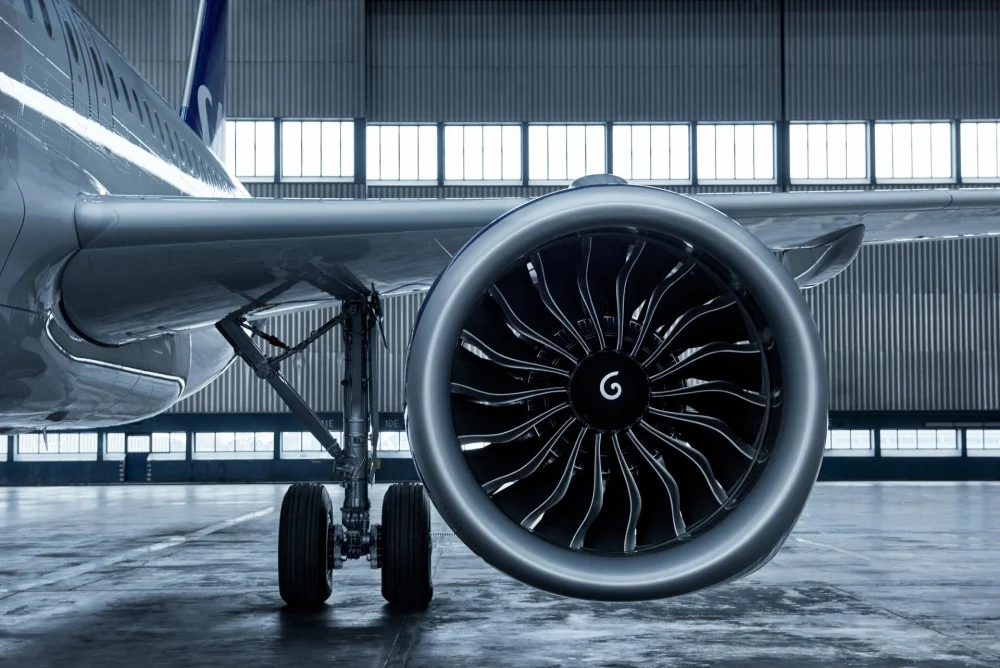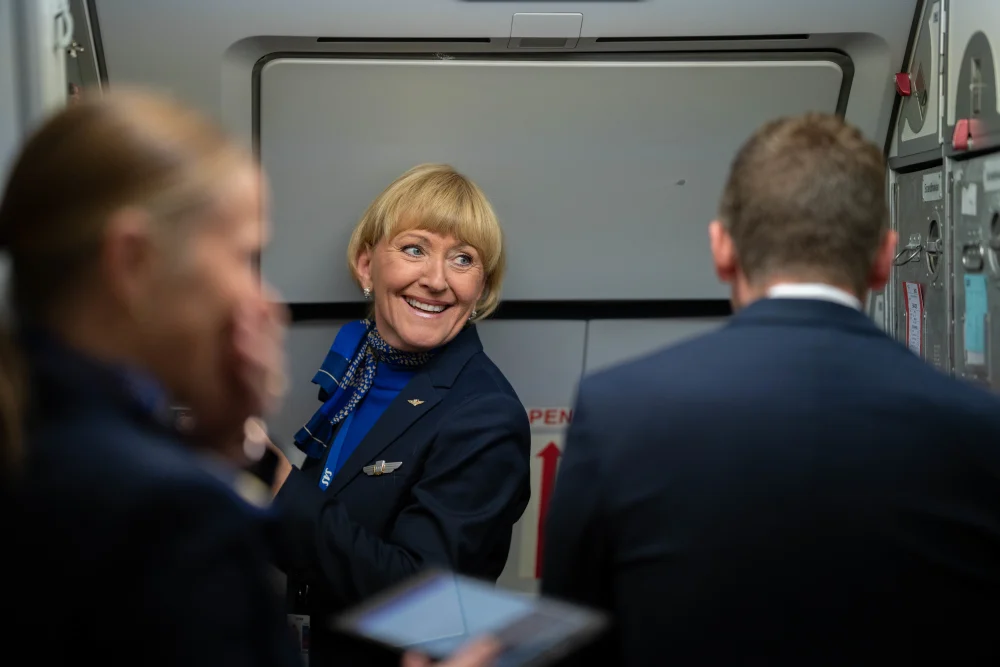
The SAS pilot answers your questions
How do pilots navigate the tarmac? Wonder no more.
”Each airport is unique and applies its own procedures and routines on the ground. Taxiing is normally the biggest challenge, especially in limited visibility and darkness.”
How do the pilots find their way around the different airports? Is there a map?
The pilots review the approach, landing and taxi to gate during the descent in order to decide on the appropriate technique and method to use. They decide how much to apply the flaps, how to utilize the automation systems and how to apply the brakes and engine reversers to adjust the retardation of the plane. Each airport also has its own regulations to comply with, and there are also different weather conditions to consider.
The terminal to be used is normally known in advance, as we fly to all destinations regularly. Ground staff members communicate the exact parking position or gate via data link before we land, or we get this information just after landing over the radio from the air traffic controllers together with a specific route to be followed. All the taxiways have specific names and markings to facilitate navigation, and we also have a map showing all intersections, taxiways and parking stands.
Each airport is unique and applies its own procedures and routines on the ground. Taxiing is normally the biggest challenge, especially in limited visibility and darkness. You can always stop and ask for guidance or have a “follow-me” car show the way, as you may have noticed with some charter flights.

Does the plane brake with help from the engines or are there brakes on the wheels?
Each wheel has a brake except for those on nose gear, although some fighter planes have a brake there as well. Carbon brakes are becoming more common, as they are much lighter than steel brakes. Carbon brakes are also much more efficient and can withstand higher temperatures. The turnaround time of an aircraft – from landing until the next departure – can be limited by the brakes because the temperature before takeoff must be below a certain level to ensure proper functioning in the case of a late decision to stop the aircraft on the runway, a so-called rejected takeoff.
The engines are primarily designed to produce thrust to accelerate the aircraft, but on most aircraft there are devices called reversers that can be deployed by the pilots upon landing or a rejected takeoff to assist in the deceleration of the aircraft. The rotation of the engines is the same, but the thrust vector is reversed. For propeller-driven aircraft, the pilots shift the angle of the propeller blades.
When the reversers are deployed, the pilots use the thrust levers to control the amount of reverse. Idle reverse mode is generally used, as it is fuel-efficient and creates less noise. If required, the amount of reverse can be increased to assist in the retardation and limit the brake temperature. The brakes have anti-skid properties and can be applied manually by the pilots or automatically in predefined modes upon landing.

What does it take to become a pilot? How much education do you need?
To become a skilled and experienced pilot takes a number of years in the specific aircraft type and network you are flying. You will learn new things and tricks every day. A humble piece of pilot wisdom is this: Truly superior pilots are those who use their superior judgment to avoid those situations where they might have to use their superior skills.
All pilots have to start somewhere, and a good start is to fly gliders or join a flying club and start flying single-engine aircraft. After a minimum of 45 hours of training and applicable topics of theory, you are rewarded with a private pilot license (PPL). Specific qualifications and ratings for night flying and instrument flying can be added to the license. To fulfill the requirements to become an airline co-pilot, you need to have around 200 flight hours. To be qualified to fly multi-engine aircraft, you need to have a commercial pilot license (CPL) with an instrument rating, and you must have attended a multi-crew coordination course (MCC). You also need to have ATPL (Air Transport Pilot License) theory, which consists of 14 topics. There are training facilities that combine all of the training, and it takes about two years of full-time study to obtain the papers you need to start working as a co-pilot. The captain or commander of the aircraft has more years with the company and is more experienced.
A pilot is rated on one aircraft type at the time, so when shifting from a Boeing 737 to an Airbus 320, a type rating is required. The training includes technical training on all systems and flight training on a simulator. A typical course takes about two months in total, which includes around 60 hours of simulator flying and covers all emergencies along with some line training with an instructor.

Before takeoff, the cabin crew says something like “Arm slides, cross check and report.” What does this mean?
The slides are evacuation slides, which in the event of an emergency are used to evacuate the aircraft quickly. These slides are packed and held within slide bustles inside the doors. Prior to departure, when all releases are performed and the commander decides to take off, the doors are closed and the slides are armed so if the doors should be opened again, the slides will expand rapidly and can be used to evacuate the aircraft. A slide can also be detached from the aircraft and used as a raft if required.
Cross check means that the cabin crew members who arm the slides double check that the girt bar is in place. Then comes a conference call in which all cabin stations report to the senior cabin crew or air purser that the doors are armed and respective duties are performed. If there is more than one cabin crew member at the station, one is still responsible for arming the doors but is monitored by a colleague.
When coming to a gate after landing, the doors must be disarmed before they are opened, and this task is also performed using a predetermined sequence and verification by the crew. The callouts are a bit different among operators and are sometimes changed to adapt to new equipment and aircraft.
”On a regular flight, one pilot flies the aircraft while the other monitors the flight.”
How are the duties divided in the cockpit? Do both the captain and co-pilot do things, or is one just there in case something happens to the other?
Onboard every flight there is always a commander and a co-pilot. The commander always has the rank of captain, and the co-pilot normally has the rank of first officer. There are big differences among operators, but there are normally different levels of first officers depending on their years employed. Sometimes, the cockpit will hold two captains, but only one is the commander. The commander sits on the left and the co-pilot on the right. Air transport aircraft require a minimum of two pilots, but longer flight times sometimes have three or four onboard. The co-pilot is second in command, and the final responsibility rests with the commander.
On a regular flight, one pilot flies the aircraft while the other monitors the flight. The one who is flying the plane is called PF (Pilot Flying) and the other PM (Pilot Monitoring). Monitoring includes handling the radio and communicating with the controllers along the way, performing fuel checks and controlling all the switches and handles on orders of the PF. The task sharing can always be changed in the case of abnormalities or emergencies, but low-visibility takeoffs and landings are normally handled from the left-hand seat.
The commander decides which pilot is to be PF and which one PM and makes sure the duties are evenly distributed. Operators take different approaches here, but everyone has a common interest in sharing flying duties, so the jobs are typically divided fairly equally and both pilots keep the flying skill at a high level.
Answers by Lars Sveding, SAS pilot
Do you have a question for the pilot? Send it to askthepilot@scandinaviantraveler.com
Lars Sveding
Age: 49
Born: Valbo just outside of Gävle, Sweden.
Career: First Officer at SAS, employed 1996 and Flight Instructor General Aviation since 1989.
Flies: Presently Airbus 330/340, long-haul. Previous aircrafts at SAS B737, B767, MD80, FK28.
Flight hours: 18,300